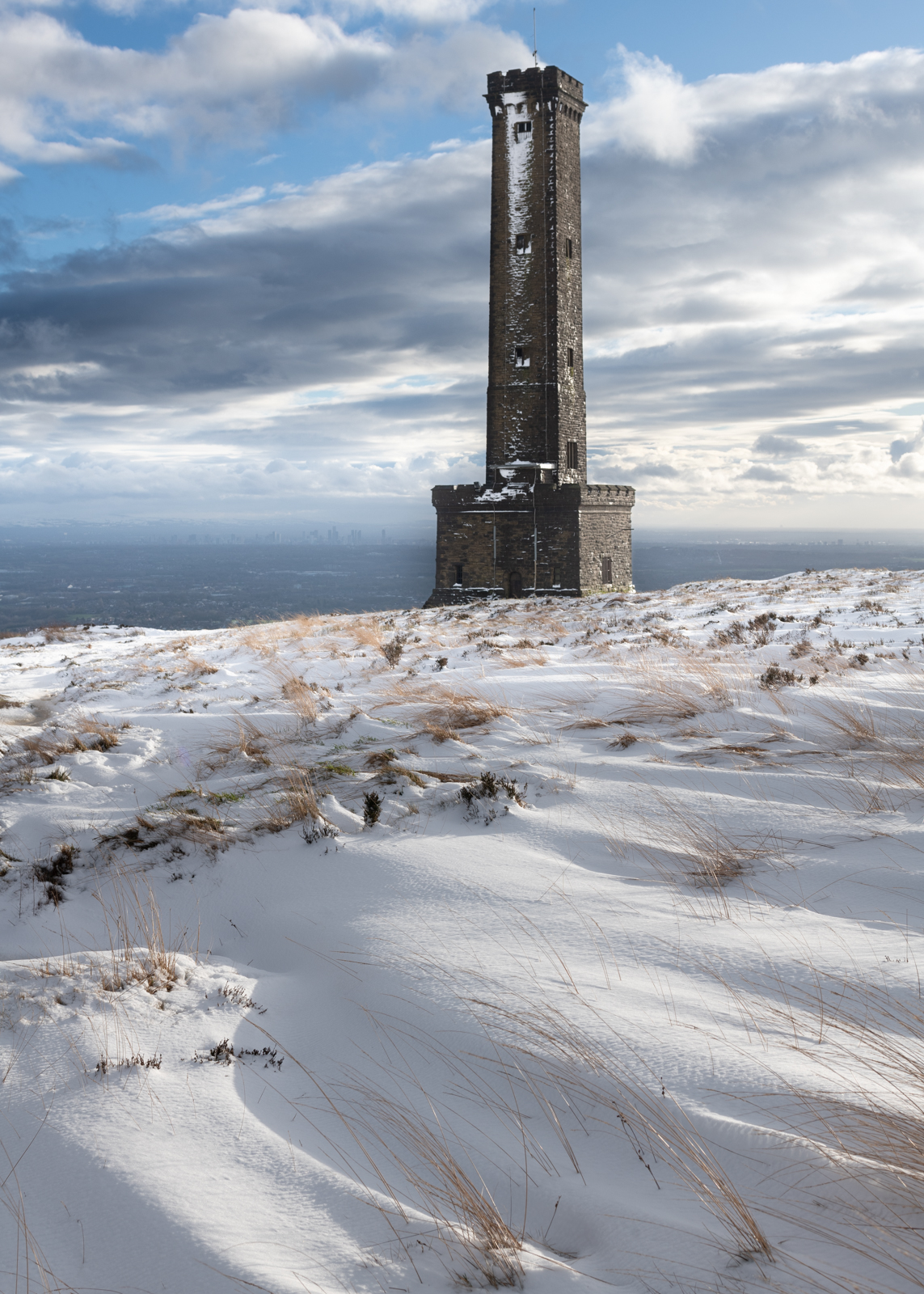The historic village of Holcombe lies in the district of Ramsbottom, part of the Metropolitan Borough of Bury, at the northern edge of Greater Manchester. It is situated south of Haslingden, east of Edgworth, west of Ramsbottom, and north of Tottington. The name comes from the Celtic cwm meaning valley, and the Old English hol, meaning deep or hollow.
Above the village, where Holcombe Moor begins, stands one of the region’s most recognisable landmarks. Peel Tower was built in 1852 as a memorial to the Bury-born politician Sir Robert Peel, founder of the modern police force and celebrated for his repeal of the Corn Laws, which were widely seen as a tax on the poor.

Much of the moorland around the village is in the care of the National Trust and is popular with walkers, cyclists and bird watchers. The buildings in the area are made up predominantly of stone cottages and farms. There is a public house called the Shoulder of Mutton, a restaurant, church, and primary school. At one time the village also had a shop, Post Office, a lock-up cell and a bus service linking it to Holcombe Brook, a neighbouring village one mile to the south.
There are more local pictures here. Drone videos here.
Holcombe is the historic home of the Holcombe Hunt. This pack of foxhounds, which was kennelled here for more than 200 years, is one of the oldest in the country. The Hunt was granted a Coat of Arms in 1985, with the motto Hunting and Conserving. Holcombe also gives its name to an Annual Gamecock Show, held on New Year’s Day in Ramsbottom.
Since 1976 Holcombe has been home to Darul Uloom Al-Arabiyyah Al-Islamiyyah, the first Darul Uloom Islamic College in the UK.
Most villagers are members of the Holcombe Society, dedicated to conserving and improving our local environment and amenities. A recent initiative was to arrange for the installation of a defibrillator in the village. More information here.
Note that there are other Holcombe Villages elsewhere in England. There is one in Devon (see web site) and another in the Mendips in Somerset.